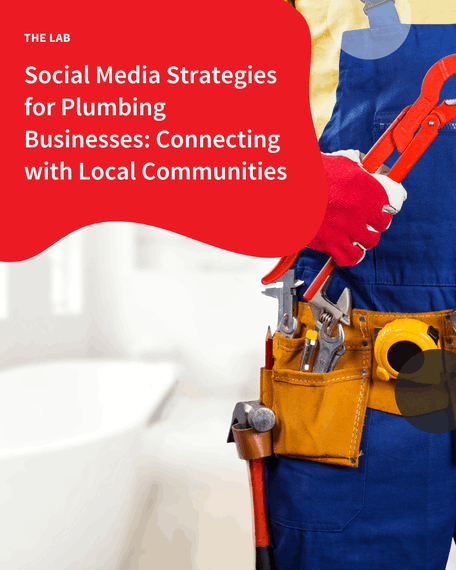Have you ever wondered how nonprofit websites can harness the full potential of the digital landscape to amplify their impact?
 In an era where pixels hold as much power as pamphlets, and clicks rival handshakes, nonprofit organisations find themselves at a crossroads. The question isn’t whether they should embrace the online realm—it’s how skillfully they can navigate it. Welcome to our exploration of the essential features that can transform a mere website into a dynamic force for good.
In an era where pixels hold as much power as pamphlets, and clicks rival handshakes, nonprofit organisations find themselves at a crossroads. The question isn’t whether they should embrace the online realm—it’s how skillfully they can navigate it. Welcome to our exploration of the essential features that can transform a mere website into a dynamic force for good.
Holistic web design and digital marketing solutions aren’t just buzzwords—they’re the backbone of success. Especially in an era where business websites, including nonprofit websites, are often the touchpoint for potential customers, and in the case of nonprofits, donors.
A website’s design and functionality can make or break a donor’s decision to engage with a nonprofit organisation to donate, volunteer, raise funds, etc. At Accentuate Web Design and Marketing, we thrive on transforming digital landscapes into vibrant, high-energy experiences that drive results.
The Accentuate team is fueled by innovation, guided by expertise, and rooted in the heart of Australia—we embark on a journey. Our mission? To unravel the secrets behind nonprofit websites that don’t just exist but thrive. These virtual hubs aren’t mere pixels; they’re bridges connecting purpose-driven missions to a global audience. And today, we invite you to discover the blueprint for digital success.
So, fasten your seatbelt, and let’s dive into the digital cosmos, where pixels become purpose, and clicks become change.
1. Clear Mission and Vision Communication: Engaging Hearts and Minds
Every successful nonprofit organisation has a compelling mission that drives its purpose and motivates its supporters. Website design for nonprofits begins with effectively expressing their mission and vision to visitors.
Organisations can further engage with their audience by clearly defining and explaining these essential characteristics. This clarity unifies stakeholders and motivates them to take real action, whether via donations, volunteering, or advocacy.
2. Donation and Fundraising Integration: Empowering Support Through Seamless Giving
One of the most important features of successful nonprofit website design is the smooth integration of contribution functions. From user-friendly contribution buttons strategically placed around the site to engaging donation forms that feature impact stories, every piece should promote and enable financial support. Nonprofits may inspire confidence and generosity from their supporters by making the donation process simple and open.
3. Volunteer Opportunities: Mobilising Community Engagement
Effective nonprofit website design goes beyond fundraising to promote community participation through clear and attractive volunteer options. Nonprofits may use their digital platforms to emphasise important volunteer jobs, simplify sign-up procedures, and display volunteer testimonials and success stories.
4. Responsive Design and Accessibility: Mobile-Friendly Design
Your website’s principal aim is to communicate with your target audience, preferably with as few clicks as possible. This implies you should prioritise a simple, user-friendly design that communicates information effectively. The design should prioritise responsiveness, adjusting easily to different devices and screen sizes.
Prioritising mobile-friendly and user-friendly design also aids in search engine optimisation (SEO), which increases your website’s visibility in search engines such as Google. Since 2018, Google has prioritised the mobile experience for websites.
5. Impactful Visual Design: Bringing Your Mission to Life
Visual storytelling is a significant technique in website design that helps organisations successfully communicate their mission and impact. Nonprofits may elicit emotion, motivate action, and increase user engagement by employing appealing images relevant to their cause, such as pictures and videos. A clean and professional design style not only boosts trustworthiness but also guarantees that visitors have a visually appealing experience when exploring the site.
6. Blog or News Section: Keeping Supporters Informed and Engaged
A dynamic blog or news section is crucial for nonprofits to share updates, success stories, and relevant industry news with their supporters. By regularly updating content, nonprofits can enhance SEO, drive website traffic, and foster ongoing engagement. This section serves as a platform to showcase achievements, highlight impactful initiatives, and demonstrate transparency in organisational activities.
7. Social Media Integration: Amplifying Reach and Engagement
Effective social media integration is critical for NGOs seeking to broaden their reach, stimulate community participation, and increase their impact. Nonprofits may promote themselves and communicate with their target audience in real-time by linking to social media sites and integrating feeds directly on their website. This integration not only improves exposure but also motivates supporters to share and promote their organisation’s cause.
8. Donor Transparency: Building Trust Through Accountability
Transparency is vital for establishing donor confidence. The goal is to ensure accountability and transparency by maintaining accurate financial records, demonstrating responsible fund usage, and promoting donor appreciation and impact reporting. Nonprofits may build trust and credibility with their supporters by offering clear insights into how donations are used and the impact they have.
9. Easy Navigation and Search Functionality: Guiding Users Seamlessly
Intuitive navigation and excellent search functionality are essential components of nonprofit website design. A well-organised navigation menu with defined categories allows users to discover information quickly and simply.
Implementing a search bar improves the user experience by making it easier to find certain materials. Nonprofits should guarantee that visitors connect positively with their website by prioritising ease of navigation and accessibility, fostering long-term engagement and support.
Keep the content simple, concise, and easy to understand. Our goal is to ensure that stakeholders have a rewarding online experience from the get-go.
10. Impact Metrics and Success Stories: Demonstrating Effectiveness
Highlighting quantifiable outcomes and captivating success stories is critical for proving the effect of a nonprofit’s efforts. The website design should have specific parts that demonstrate how donations and volunteer work lead to concrete effects. Nonprofits may persuade funders and volunteers to continue supporting their cause by offering clear impact data and compelling success stories.
11. Calls-to-Action (CTAs): Inspiring Engagement and Support
Stories and effective calls-to-action (CTAs) are critical for directing visitors to meaningful interactions and support on nonprofit websites. CTAs are strategically positioned using compelling language to urge visitors to give, volunteer, subscribe, or do other desired actions. Nonprofits may interest visitors in their cause by employing appealing language and clear guidelines, resulting in conversions and long-term partnerships.
12. Search Engine Optimisation (SEO): Enhancing Visibility and Reach
In today’s digital world, optimisation is essential for nonprofits looking to increase online visibility and attract new supporters. Nonprofit organisations can improve organic traffic to their websites by using SEO best practices, such as choosing the right keywords and creating informative meta descriptions. This not only expands their reach but also ensures that their goals and influences are those of people who want to make a difference.
13. Testimonials and Endorsements: Building Credibility
Nonprofit organisations rely heavily on testimonials and endorsements to promote credibility and trustworthiness. Including testimonials from recipients, volunteers, and partners on their websites demonstrates the impact and efficacy of their work.
Furthermore, endorsements from credible sources serve to legitimise the organisation’s objectives and achievements, boosting trust among potential funders and supporters.
Nonprofits may inspire trust, build their reputation, and persuade more people and organisations to join and support their cause by displaying positive comments and endorsements.
14. Compliance and Legal Information: Building Confidence and Maintaining Trust
To sustain stakeholder confidence, nonprofit organisations must prioritise legal compliance and operational openness. Displaying critical information on their websites, such as nonprofit registration information, privacy policies, and terms of service, displays responsibility and adherence to ethical standards.
Having a secure website is critical for instilling trust and confidence in funders, volunteers, and stakeholders. Implementing SSL certificates for safe transactions, showing trust seals, and following data protection rules such as the General Data Protection Regulation (GDPR) are critical for protecting donor and user information while maintaining confidentiality and security. GDPR compliance applies to Australian firms with a well-established presence in the EU, including those with a branch office in one or more EU member states.
Furthermore, adding Web Content Accessibility Guidelines (WCAG)-compliant elements improves accessibility, making the website usable for those with impairments. Nonprofits that embrace diversity in design may increase their reach, engage a diverse audience, and satisfy their objective of equitable community service.
The Road to Nonprofit Success
In conclusion, an effective nonprofit website design includes mission communication, donation integration, responsive design, visual storytelling, regular blog updates, social media integration, security measures, donor transparency, and intuitive navigation to maximise reach and effectiveness.
Accentuate Web Design and Marketing is committed to assisting NGOs in meeting their objectives via smart and innovative site design and digital marketing solutions. Our skill in designing one-of-a-kind, goal-oriented websites guarantees that your organisation stands out and achieves tangible outcomes.
We understand the significance of each aspect we discussed above, and we are dedicated to offering complete services that meet all of your web design and marketing requirements.
Are you ready to improve your nonprofit’s online presence? Find out how Accentuate can help you create a high-performing website that promotes success by exploring our web design and development services.








